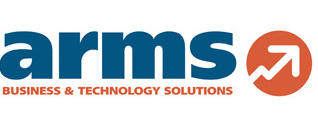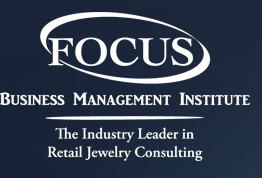Articles and News
20 Expert Tips To Help You Buy With Your Budget, Not Over It | May 21, 2014 (0 comments)

Las Vegas, NV—Beneath the blazing neon lights and jangling bells and whistles, every casino has a small piece of fine print: “Bet with your head, not over it.”
No retailer intentionally treats a tradeshow as a gambling venue, but as every jeweler knows, it’s easy to get caught up in the beauty of a line that’s so breathtaking or innovative that you can’t conceive of the idea that customers wouldn’t love it as much as you do.
But as every jeweler also has invariably discovered at least once in his or her career, sometimes the customer just doesn’t see what you see. Or they see it and they appreciate it, but they still don’t buy it because it doesn’t fit into their lifestyle. And then you’re stuck with it and wish you had that cash back.
As the industry heads to Las Vegas next week for the Couture, Luxury, and JCK Shows, The Centurion asked two leading industry business experts, Malcolm Alderton of ARMS and Don Grieg of Focus BMI, to offer their best tips on how to keep your head—and your budget—in line with your store’s needs, while still leaving yourself a little room for those “wow” pieces.
Here are Alderton’s top 10 tips for buying wisely at a tradeshow:
1. Have a buying budget before getting to the show and always be conscious that what you buy has to be paid for. So DO NOT buy more than you can pay for. It will stress your cash flow, your relationship with your suppliers and give you sleepless nights.
2. Your buying budget should be determined by your planned cost of sales from the show through to the end of the year.
3. Buy what your customers like, not necessarily what you like. Just look at your shelves to see inventory you like, that your customers do not liked (it's called old inventory).
4. If you have fast sellers not yet reordered, first commit to re-ordering these. They have a track record of making you money.
5. Identify your 10 most profitable suppliers, they will be providing 80-90% of your profit. Ensure you visit with these suppliers armed with a stock on hand sales report. If they are creating 80-90% of your profit they deserve 80-90% of your time.

6. To help your cash flow, stage delivery from various suppliers over a few months. It also keeps nice new stock coming in each month.
7. Place orders for confirmation in, say, two weeks. This gives you a chance to revisit the orders when you get home in the cool calm light of day.
8. Make sure all suppliers total their orders, so you can ensure you don't over spend your budget. Each night, add up the orders for the day and deduct from your buying budget. This will help you stay on track with your buying budget.
9. More and more suppliers can appreciate that their old inventory sitting on your shelf results in you not wanting to invest more money with them. Many will negotiate trade backs. Remember, if you don't ask, you don't get.
10. Suppliers invest a lot to create sales at trade shows: attractive booths, new collections, special offers, a welcoming environment and more. They need to tempt you to buy nice new lines from them. Your job is to remove the emotion and apply logic to help yourself stay in control of your buying. If you are a new buyer, don't learn the hard way.
Here are Grieg's top 10 tips:
1. May is almost over, so let’s think of May as the end of the previous 12 months of business. June is the beginning of the next 12 months. How well you plan your buying for the next 12 months will control your success.
2. Suppliers are a vital part of your success. Your top eight to 10 suppliers should be producing 80% of your sales, and your markup should average 130%. These suppliers should have an average retail sale of more than $1,000.
3. If you plan to increase sales by 30%, you will need to increase the sales of all your top suppliers by 30%.
4. Even though these eight to 10 suppliers are your best ones, you should always be evaluating them. You may discover that you need to change a couple of them for various reasons. You should also be looking for new diamond suppliers who have quality cuts and the prices you want to pay.
5. A $1 million store will spend at least $500,000 on product over the next 12 months. This is your open to buy for the year: an average of $40,000 per month. These figures increase proportionally with the size of your store.

6. When you go to the tradeshows these figures should be foremost in your mind. You're not going to the shows to look; you are going to the shows to buy one particular piece at a time. This is a lot of money and how wisely you spend it will completely control your prosperity.
7. Although you are going to buy, not look, you are also there to find new lines to keep your merchandise offerings fresh. Just be sure to look with a purpose.
8. Your diamond departments should be 62% of sales. Diamond and color departments should be 18% of sales, and these need the same attention as your diamond departments. The price ranges you should be looking for are: $3,750, $6,500, $15,000, and $25,000.
9. What is your planned open to buy? How much money should you spend? A $1 million store should plan to buy at least $40,000 of new inventory and [if necessary] exchange at least $40,000 of old. Again, these figures increase proportionally with the size of your store.
10. Remember, your buying at these shows determines who your suppliers will be and what you will buy and sell over the next 12 months.







